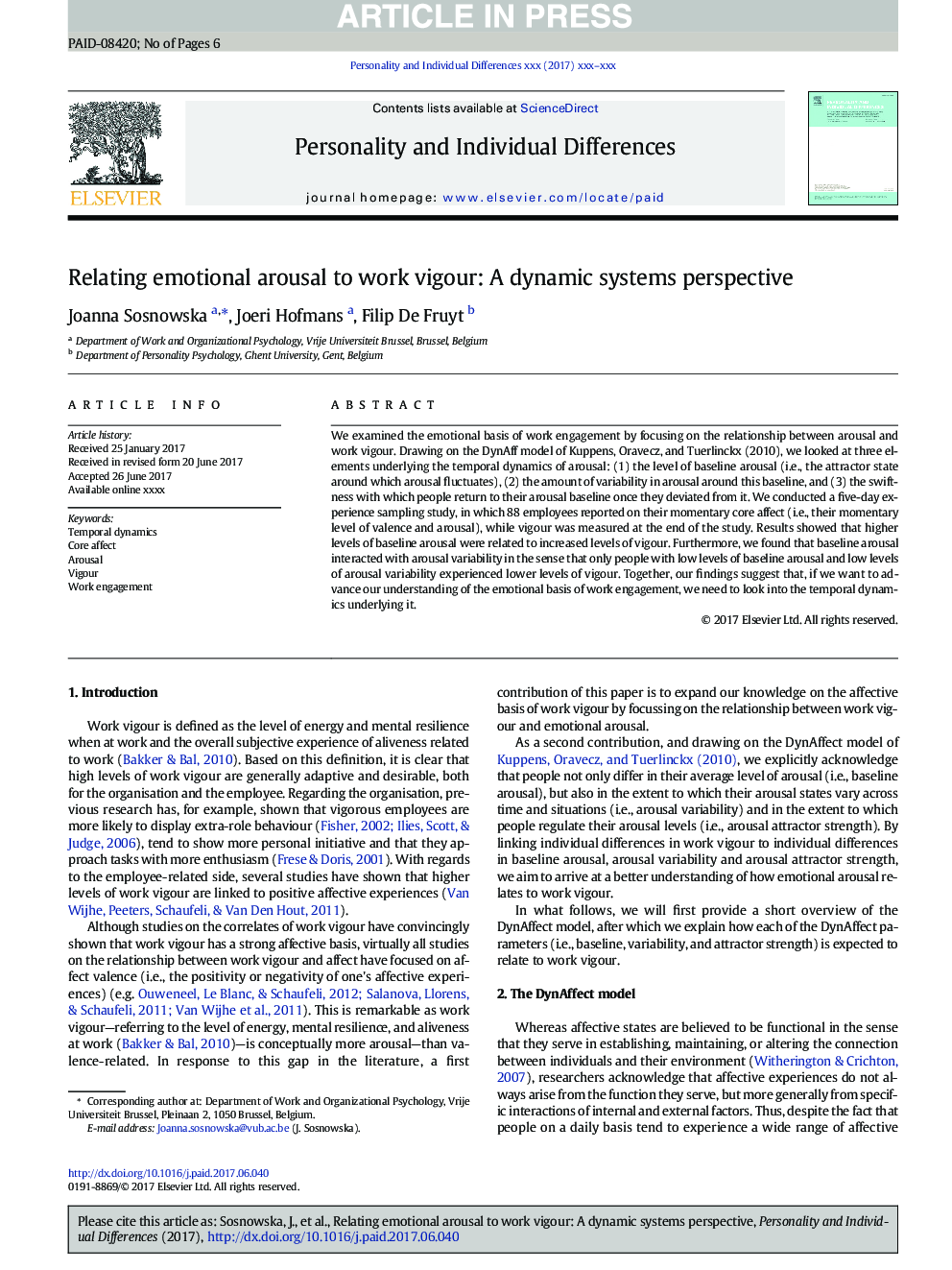| Article ID | Journal | Published Year | Pages | File Type |
|---|---|---|---|---|
| 11016197 | Personality and Individual Differences | 2019 | 6 Pages |
Abstract
We examined the emotional basis of work engagement by focusing on the relationship between arousal and work vigour. Drawing on the DynAff model of Kuppens, Oravecz, and Tuerlinckx (2010), we looked at three elements underlying the temporal dynamics of arousal: (1) the level of baseline arousal (i.e., the attractor state around which arousal fluctuates), (2) the amount of variability in arousal around this baseline, and (3) the swiftness with which people return to their arousal baseline once they deviated from it. We conducted a five-day experience sampling study, in which 88 employees reported on their momentary core affect (i.e., their momentary level of valence and arousal), while vigour was measured at the end of the study. Results showed that higher levels of baseline arousal were related to increased levels of vigour. Furthermore, we found that baseline arousal interacted with arousal variability in the sense that only people with low levels of baseline arousal and low levels of arousal variability experienced lower levels of vigour. Together, our findings suggest that, if we want to advance our understanding of the emotional basis of work engagement, we need to look into the temporal dynamics underlying it.
Related Topics
Life Sciences
Neuroscience
Behavioral Neuroscience
Authors
Joanna Sosnowska, Joeri Hofmans, Filip De Fruyt,
